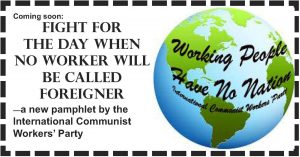The new film Spider-Man: Into the Spider-Verse, supposed to be the best animated film ever of the genre, is not very far from the original comics of the past.
The current wave of production of superhero films is a lot like the period when superhero comics were first produced.
The American capitalist masters at the end of the Great Depression and the beginnings of World War II urgently needed to promote an ironclad patriotism to defend the status quo and to save their empire. That’s why the government promoted the creation of superheroes in comics. Superman first appeared in 1938, Batman in 1939 and Captain America in 1941.
They chose comics because about half of all enlisted personnel in the armed forces as well as millions of civilians were habitual comic book readers.
Two days after Pearl Harbor, in December of 1941, the government established the Writers’ War Board (WWB). This civil organization was formed at the request of the chief of the writing staff of the Treasury Department.
In appearance, the WWB was an independent organization composed of volunteers committed to the creation of an antifascist and pro-American culture. In essence, the WWB received funds and direction from a federal agency called the Office of War Information (OWI). The OWI allowed the government to create unofficial propaganda for consumption by civilians and military.
Within the WWB there was a Comics Committee that created comic book characters and story ideas that were then passed on to the cooperating editors. The writers and artists would create works of art and language around the ideas sent by the Comics Committee and then send drafts to the WWB for review. Often, the WWB returned these drafts with very specific requests for more anti-Japanese, anti-German and pro-U.S. images and narratives.
What does this have to do with the new Spider-Man: Into the Spider-Verse?
The main character is an Afro-Latino teenager, Miles Morales, 14 years old and a student in an elite boarding school in New York City.
He is the son of an African-American cop and an Afro-Latin mother who speaks Spanish. The uncle, brother of the father, is a rebel and graffiti artist. Against the wishes of the father, Miles meets with him secretly. He’s like a mentor to Miles. Then we realize that his uncle is part of the gang of villains led by Kingpin.
Miles is bitten by a radioactive spider and becomes the Spider-Man of his “dimension.” Then, he encounters five arachnid characters from other dimensions that join their efforts to defend the city and the other realities from which they come. They include Peter Parker (the original Spiderman), Gwen Stacy, a white South African teenager, an anime-style girl, a comic cartoon pig and a black-and-white 1930s Spider-Man Noir. By joining forces and defeating Kingpin and his gang they will be able to return to their own universes and save them from destruction.
Just as the capitalist masters relied in the past on the original comics to promote propaganda that defends the status quo, they now rely on this type of films. The times we are living in are not so different from the Great Depression and World War II. Today we live in a general crisis of capitalism and more wars that will soon lead us to World War III. The father as a policeman, the multicultural, multilingual and international grouping of different “Spider People” is an attempt to win over the population to a multicultural imperialism—to defend and protect a system based on exploitation and inequality.


